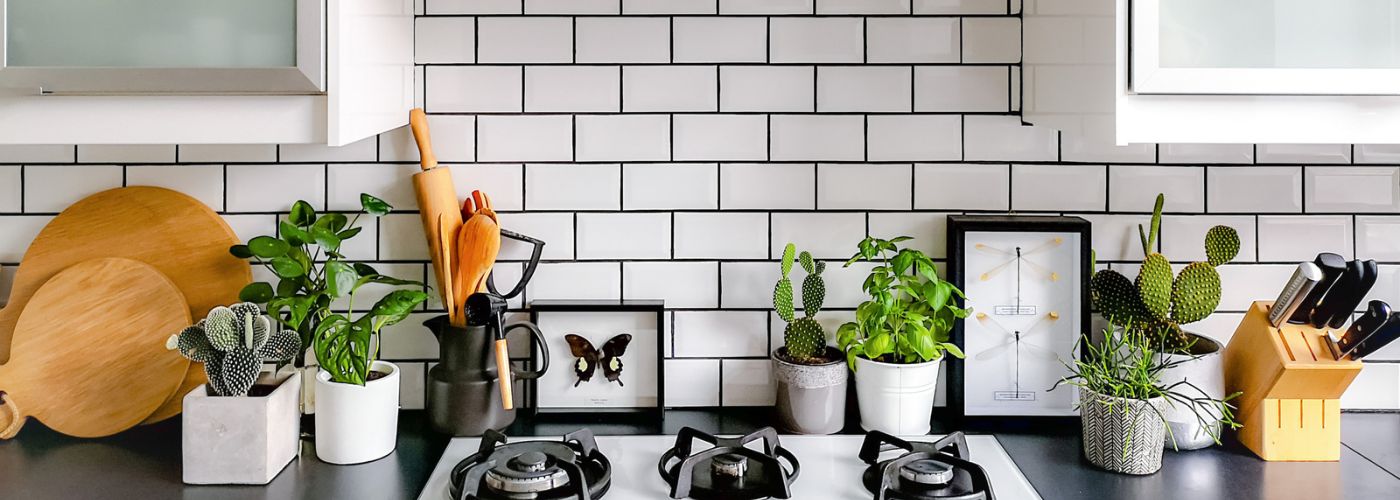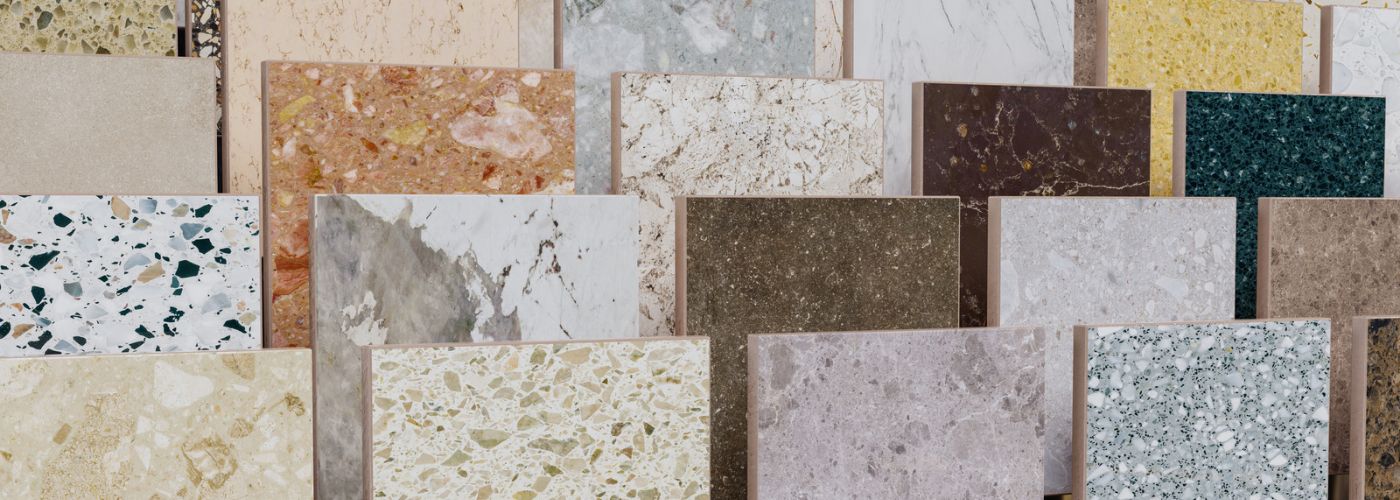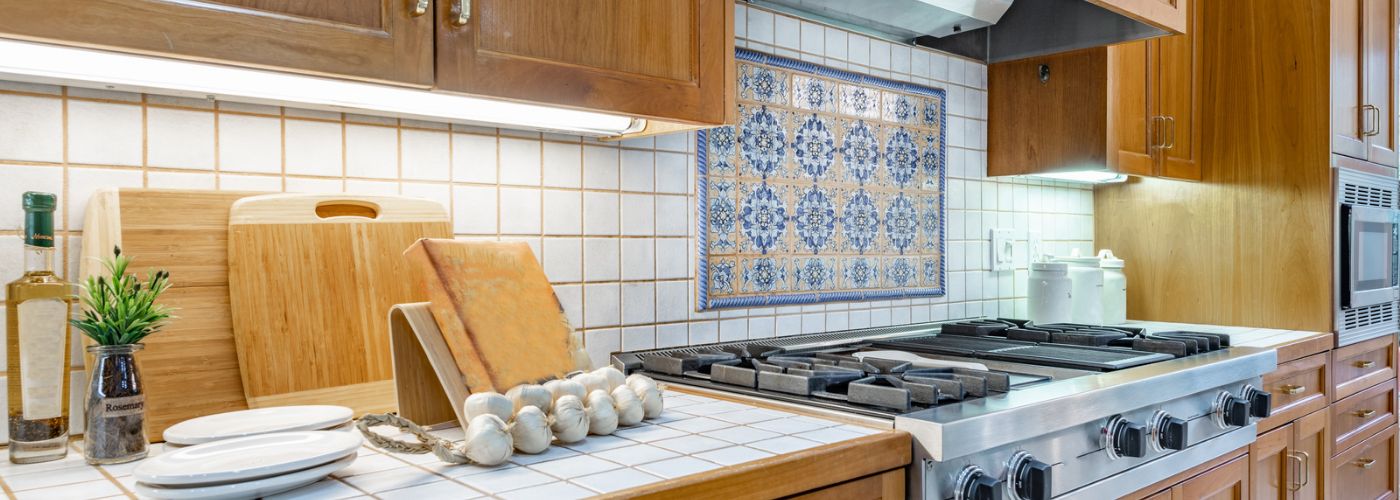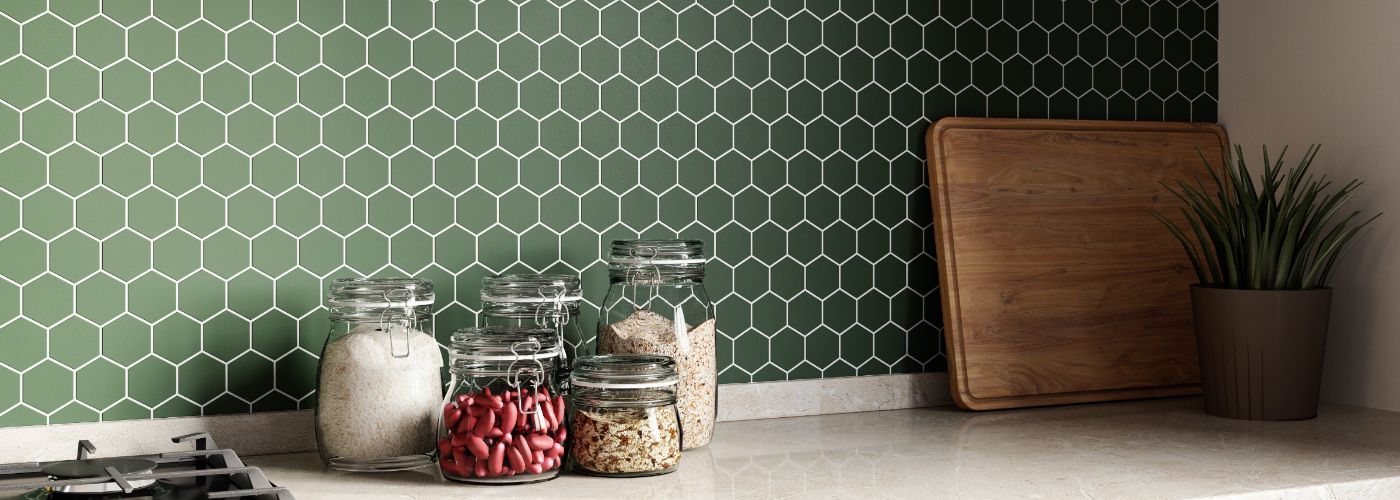Backsplashes have been a staple in kitchen design for decades. They not only add visual interest to the space, but also serve as a protective barrier between your walls and potential cooking messes. However, with modern advancements in materials and cleaning techniques, some homeowners are starting to question whether backsplash installation is actually necessary. In this blog, we will explore the benefits of installing a backsplash!
What Is Backsplash? Is It Important?

If you are a homeowner, you have probably heard the term “backsplash” thrown around. But what exactly is it, and why is it important?
A backsplash is a protective barrier that sits behind your sink, and stove, or countertop. Backsplash can also be installed in between your kitchen cabinets. It can be made of materials such as tile, stone, glass, or metal and serves to protect your walls from water damage and stains.
Not only does a backsplash serve a practical purpose in preventing damage to your walls, but it can also enhance the overall look of your kitchen or bathroom. A well-designed backsplash can provide an eye-catching focal point in your space while complementing the style and aesthetic of your home. This is a popular form of kitchen remodeling in Seattle for most homeowners.
Additionally, installing a high-quality backsplash can increase the value of your property if you decide to sell in the future.
When it comes to the cons, backsplash installation can be quite expensive. Installing a backsplash requires specialized skills and tools that most people don’t possess. Therefore, you will need to hire a professional installer who will charge you for their labor services.
Additionally, depending on the material used for your backsplash project, it can be expensive to purchase all the necessary supplies.
Another downside of installing a backsplash is maintenance requirements. Although most materials used in making backslashes are durable and easy to clean, some require extra care than others.
How To Pick A Backsplash

When it comes to designing your dream kitchen, choosing the right backsplash material is crucial. With so many options available in the market today, here are some popular backsplash materials that you can consider for your kitchen renovation.
One of the most popular materials for a kitchen backsplash is subway tiles. These rectangular-shaped tiles come in various colors and finishes, making them versatile enough to match any kitchen style or color palette.
Subway tiles are durable and easy to clean, making them perfect for high-traffic areas such as kitchens. Additionally, they offer a classic look that never goes out of style.
Another popular material for a backsplash is glass. Glass adds depth and dimension to any space, reflecting light and creating an illusion of more space in smaller kitchens. Glass tiles are also durable and easy to clean, making them low maintenance than other forms of backsplash!
Both of these backsplash materials make for a great kitchen remodel design!
How Much Backsplash Do I Need?

The amount of backsplash you require depends on various factors such as the size of your kitchen, the height between countertops and cabinets, and the type of tiles you choose. But, how much backsplash do you really need? This question often confuses homeowners who are looking to get home remodeling services.
Generally, experts recommend purchasing 10% more tiles than what you estimated. This extra material can cover any mistakes or damages caused during installation or cutting tiles to fit specific areas.
In addition to measuring your wall area’s square footage, you should consider some design aspects while determining how much backsplash you need.
For instance, if you want to use a large tile that covers the entire wall, then you’ll need to buy more tiles. On the other hand, if you prefer smaller tiles that can be placed at different areas of your kitchen, then you won’t need as many materials.
How To Remove Backsplash In Kitchen
Are you tired of your outdated backsplash in the kitchen and want to give it a new look? Removing a backsplash may seem like a daunting task, but it can be done with some simple tools and steps!
Firstly, clear the area around the backsplash so that there is enough space to work. Use painter’s tape to protect any surrounding areas such as countertops or cabinets that need extra care.
Next, using a utility knife or razor blade, carefully cut through the caulking or grout between each tile on the backsplash. If there is no caulk or grout present, gently pry out each tile starting from an open corner by inserting a putty knife.
You can also use a reciprocating saw to cut through the tile if it is present. If there are any seams or joints between tiles, using a utility knife or razor blade, carefully scrape away some of the grout until you can remove the seam.
Be sure to be extra careful when prying out any backsplash materials, you don’t want to damage your existing walls.
